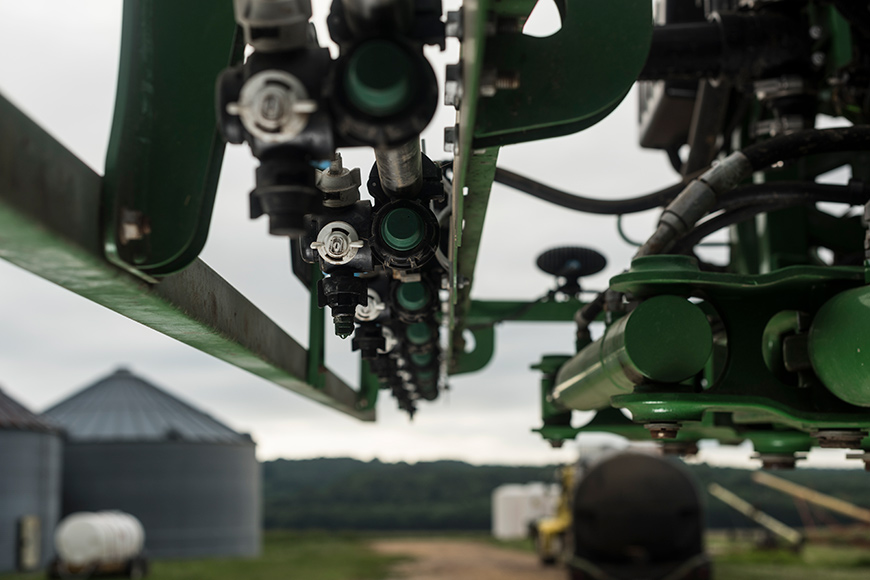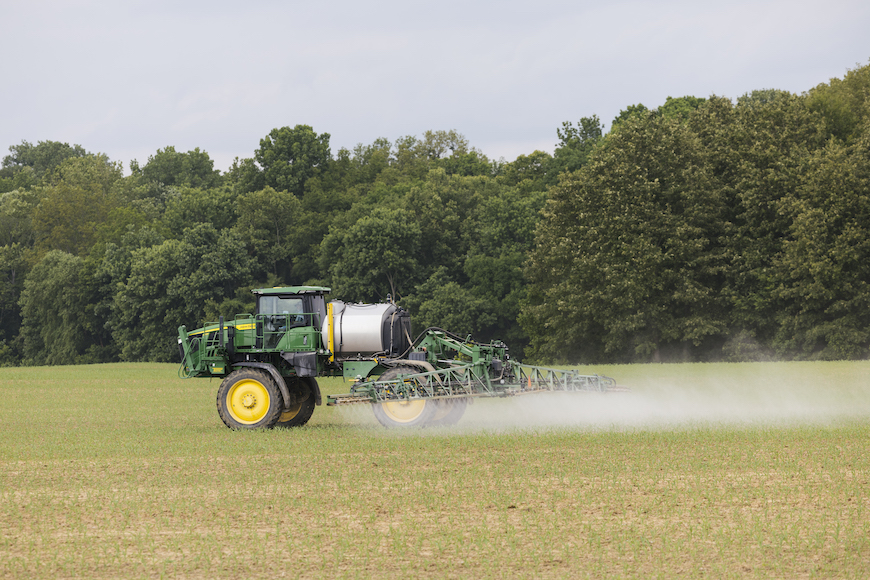2019 Dicamba Update: Label Changes That Could Impact You

The EPA announced in late October that it is extending the registration for in-season dicamba products for two more years. That’s a relief for farmers who need the technology to battle herbicide-resistant weeds. The updated dicamba label comes with additional restrictions that could impact you. Be sure to review the new label prior to spraying dicamba and be aware that there could be even more regulations imposed by your state.
2019 dicamba label changes
Take a look at the changes that you and your applicators need to be aware of for the 2019 season.
Dicamba application best practices
In addition to the new requirements, applicators should also follow good spray practices to reduce the risk of crop injury and get more effective weed control. Here are some best management practices for applying in-season dicamba products.
While it seems there were fewer dicamba damage complaints to sensitive crops in 2018 compared to 2017, there is still work to do to ensure in-season dicamba is available as a weed-control option in the future. For more information on updated dicamba regulations or best application practices review individual product labels, visit state websites and talk with your local WinField United retailer.
Because of factors outside of WinField United's control, such as weather, applicator factors, etc., results to be obtained, including but not limited to yields, financial performance or profits, cannot be predicted or guaranteed by WinField United. Actual results may vary.
© 2019 WinField United. InterLock®, OnTarget®, Class Act® Ridion™, CornSorb™ and WinField® are trademarks of WinField United.
2019 dicamba label changes
Take a look at the changes that you and your applicators need to be aware of for the 2019 season.
- Application timing restrictions. The new federal label limits low-volatility dicamba applications to one hour after sunrise and two hours before sunset to reduce the risk of temperature inversions. Last year, products could be applied from sunrise to sunset.
- Application timing restrictions, growth stage. In addition, over-the-top applications of dicamba on soybeans can be made prior to beginning bloom (R1 stage) or no more than 45 days after planting, whichever comes first. In-crop applications of dicamba can be made up to the mid-bloom stage or no more than 60 days after planting cotton, whichever occurs first.
- Mandatory applicator certification. Previously, those working under the supervision of a certified applicator were eligible to apply low-volatility dicamba. The updated label requires anyone applying the products to be certified for application.
- Tighter recordkeeping deadlines. Farmers and applicators will have 72 hours to generate records for their dicamba applications this year. Last year they had 14 days. A record must be kept for each dicamba application and must be made available to the state pesticide control official(s), USDA and EPA upon request.
- More thorough cleanout requirements. Applicators will be required to clean out their entire spray system before and after a dicamba application. This helps reduce the risk of contamination to sensitive crops.
- More scrutiny of tank-mix pH. Researchers have found that a tank-mix pH below 5 can increase the likelihood of dicamba volatility. The new label urges applicators to investigate how tank-mix partner products could impact solution pH. For example, glyphosate, a common dicamba tank-mix partner, is known to reduce the pH of a tank-mix solution.
Dicamba application best practices
In addition to the new requirements, applicators should also follow good spray practices to reduce the risk of crop injury and get more effective weed control. Here are some best management practices for applying in-season dicamba products.
- Use adequate water volume. Using the ultra and extra coarse nozzles required for dicamba applications challenges good herbicide spray coverage. That’s why a spray volume of at least 15 gallons per acre is recommended for effective weed control.
- Use proper nozzles. Be sure to choose nozzles that are required by the product label. Ultra and extra coarse nozzles help keep droplet sizes larger, so they’re less likely to move off-target.
- Add adjuvants. Drift reduction agents are required by the label, but consider if other adjuvants, including crop oils, surfactants and water conditioners, could help you get even better herbicide coverage. OnTarget® adjuvant is a drift reduction agent specifically formulated for use with dicamba. It’s more resistant to pump shear than other drift reduction agents and reduces a majority of driftable fine droplets. InterLock® adjuvant is a drift and deposition aid that can help further reduce the number of driftable fine droplets, and it improves spray deposition into the crop’s canopy. Class Act® Ridion™ with CornSorb™ technology is a non-AMS water conditioner specifically formulated for use with dicamba herbicides. It helps improve herbicide uptake for more effective weed control. Research at our Innovation Center has shown that adding InterLock with a drift reduction agent and water conditioner to your dicamba tank mix has the potential to reduce driftable fines by up to 60 percent.
- Watch drive speed. In order to maintain adequate spray pressure and deliver the desired spray volume, you’ll need to keep a consistent drive speed of no more than 15 miles per hour.
- Keep an eye on environmental conditions. If there is a risk of a temperature inversion, don’t spray. If heavy rains are expected, wait to spray to limit runoff potential.
While it seems there were fewer dicamba damage complaints to sensitive crops in 2018 compared to 2017, there is still work to do to ensure in-season dicamba is available as a weed-control option in the future. For more information on updated dicamba regulations or best application practices review individual product labels, visit state websites and talk with your local WinField United retailer.
Because of factors outside of WinField United's control, such as weather, applicator factors, etc., results to be obtained, including but not limited to yields, financial performance or profits, cannot be predicted or guaranteed by WinField United. Actual results may vary.
© 2019 WinField United. InterLock®, OnTarget®, Class Act® Ridion™, CornSorb™ and WinField® are trademarks of WinField United.




